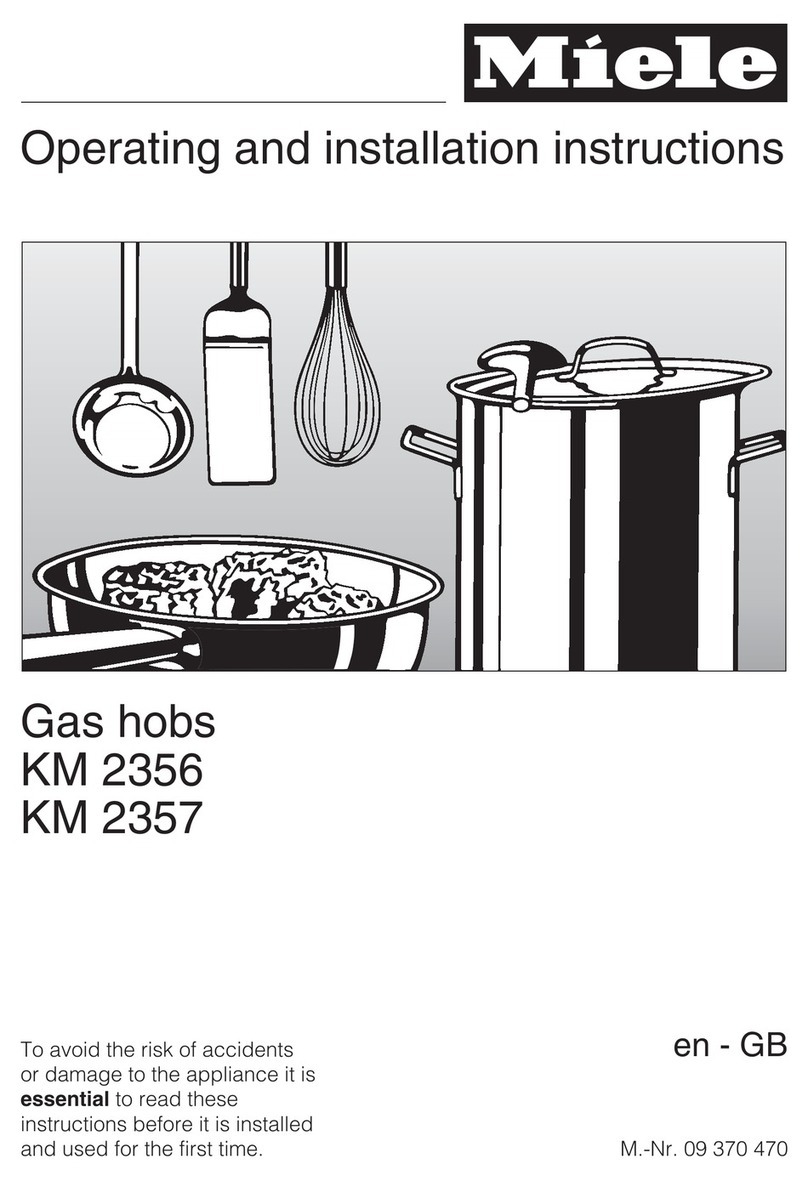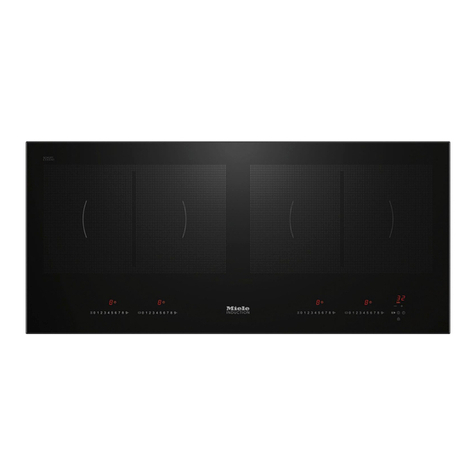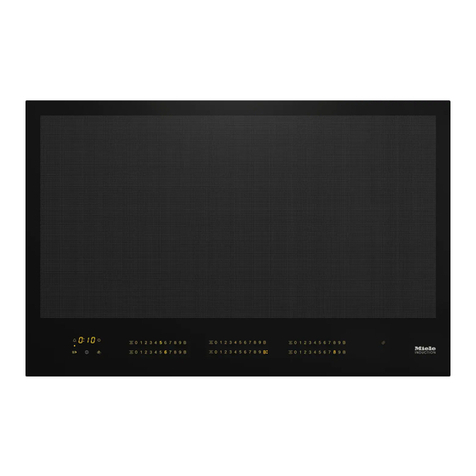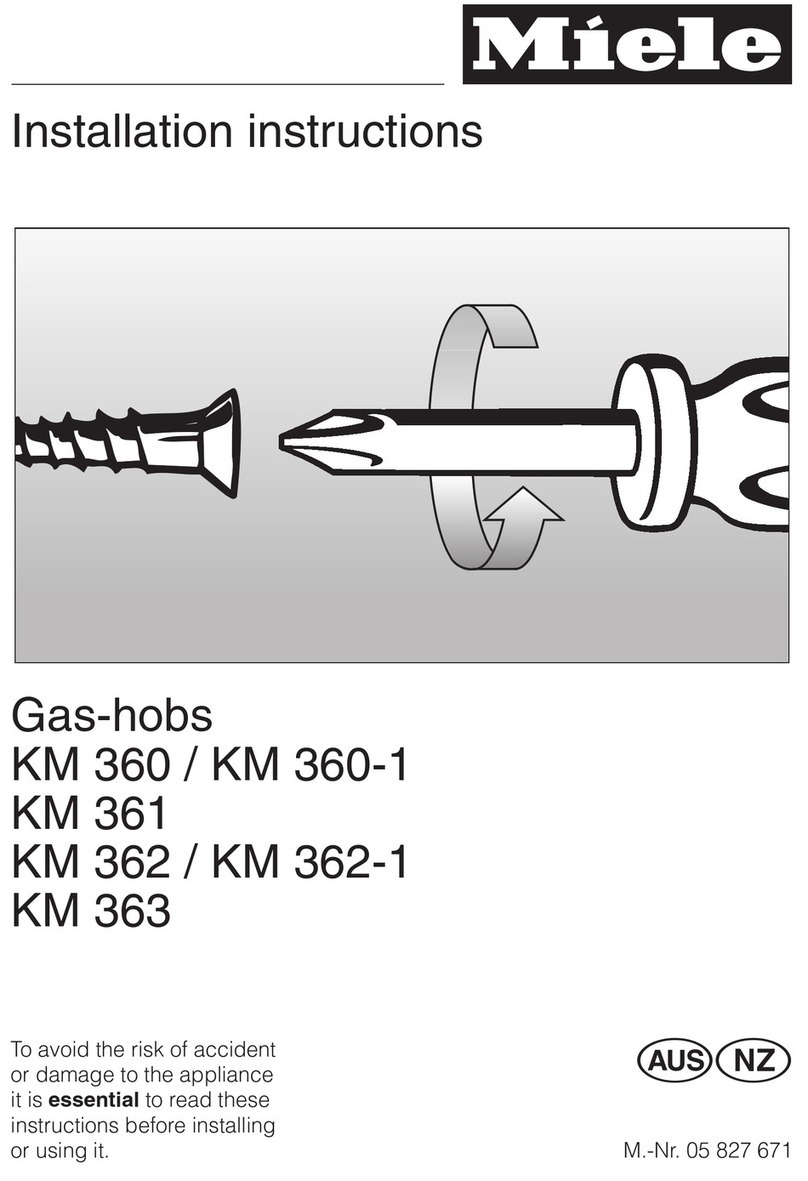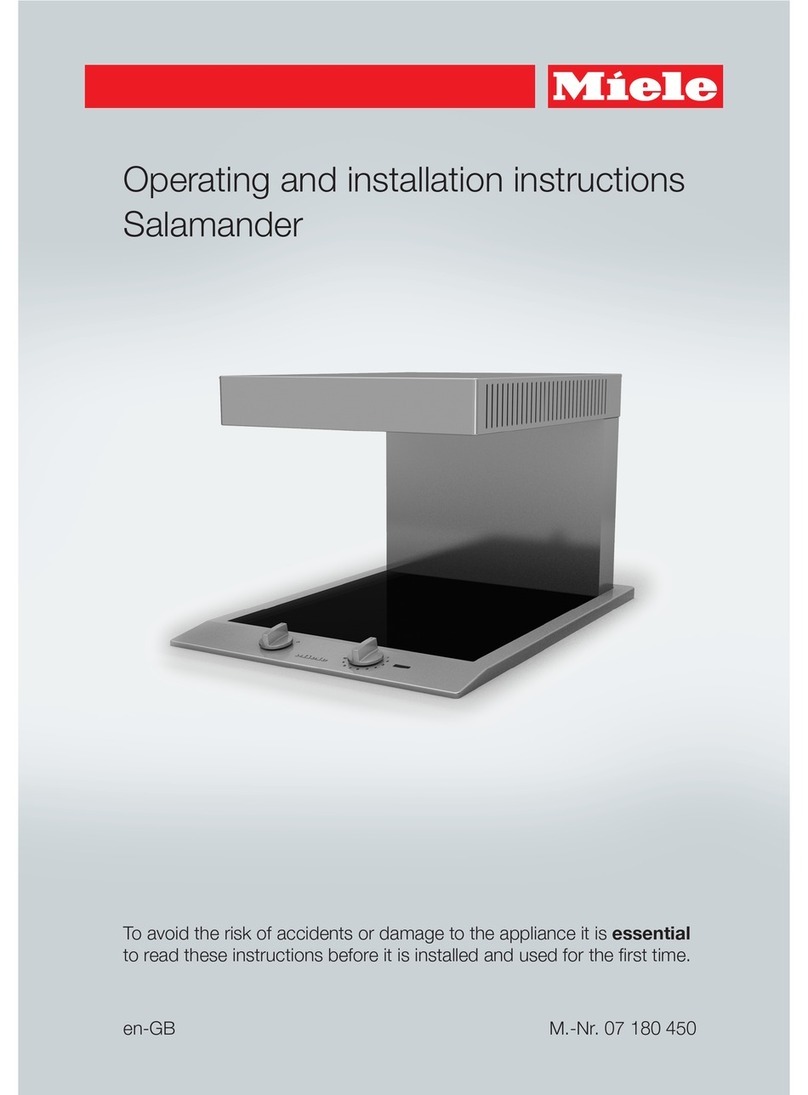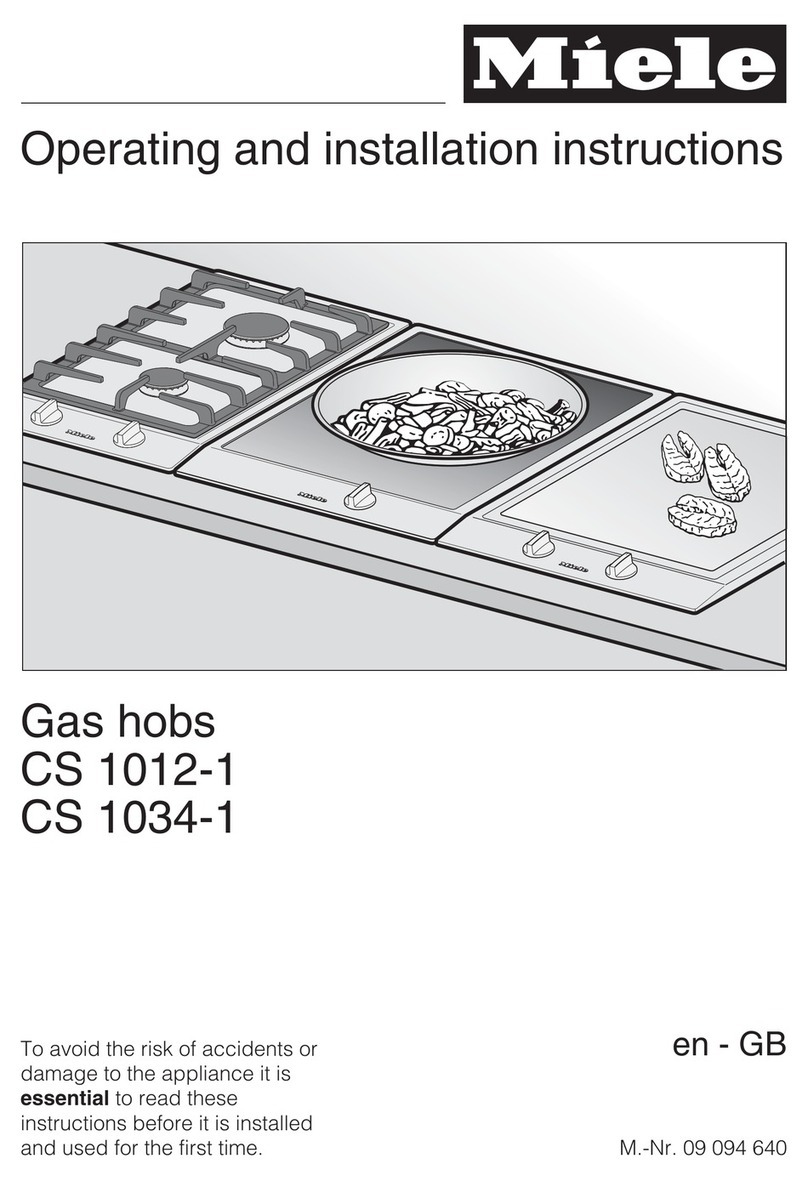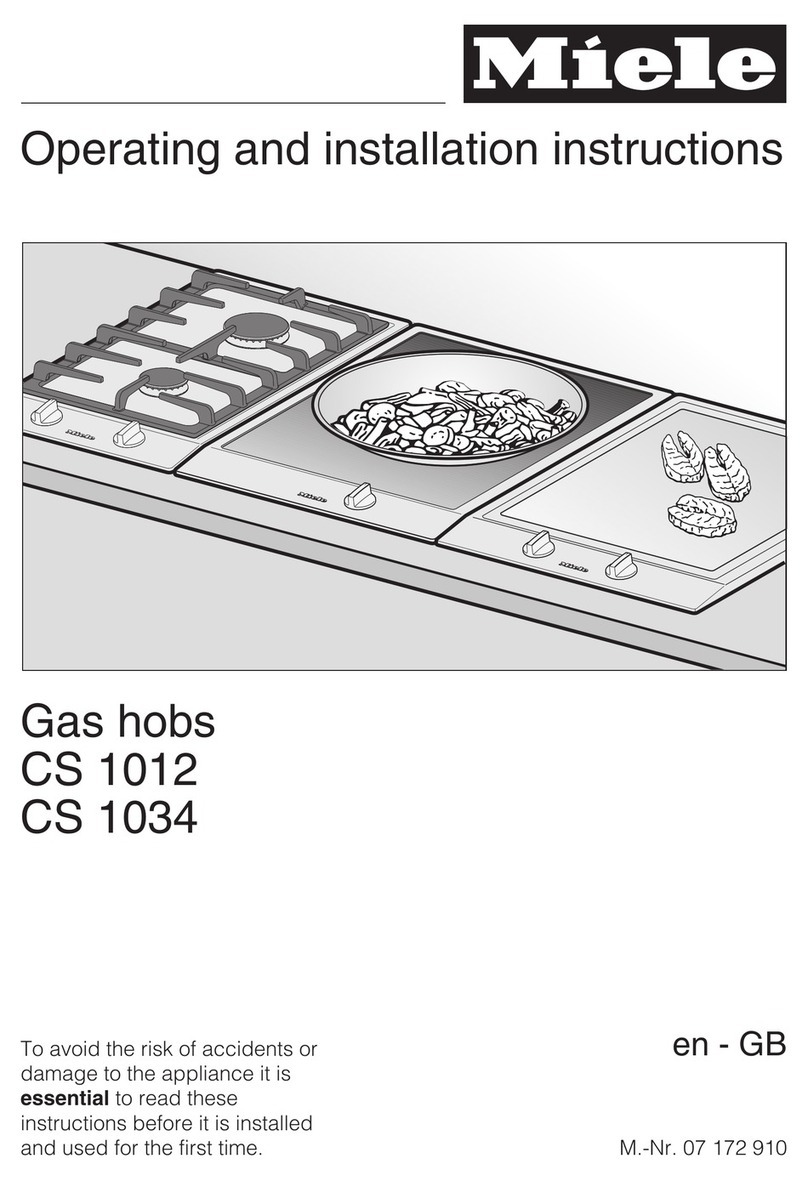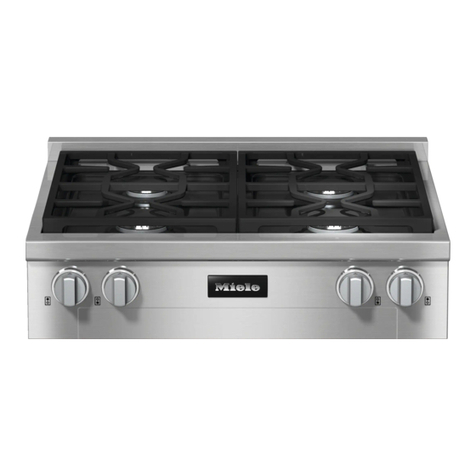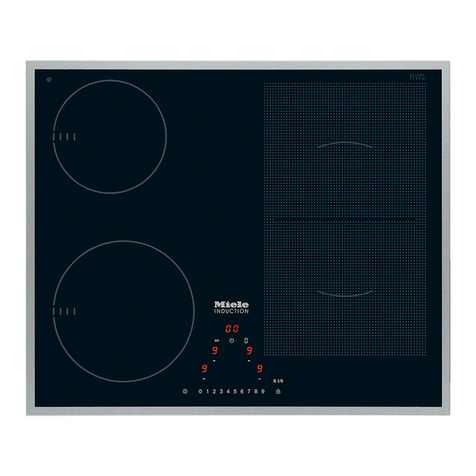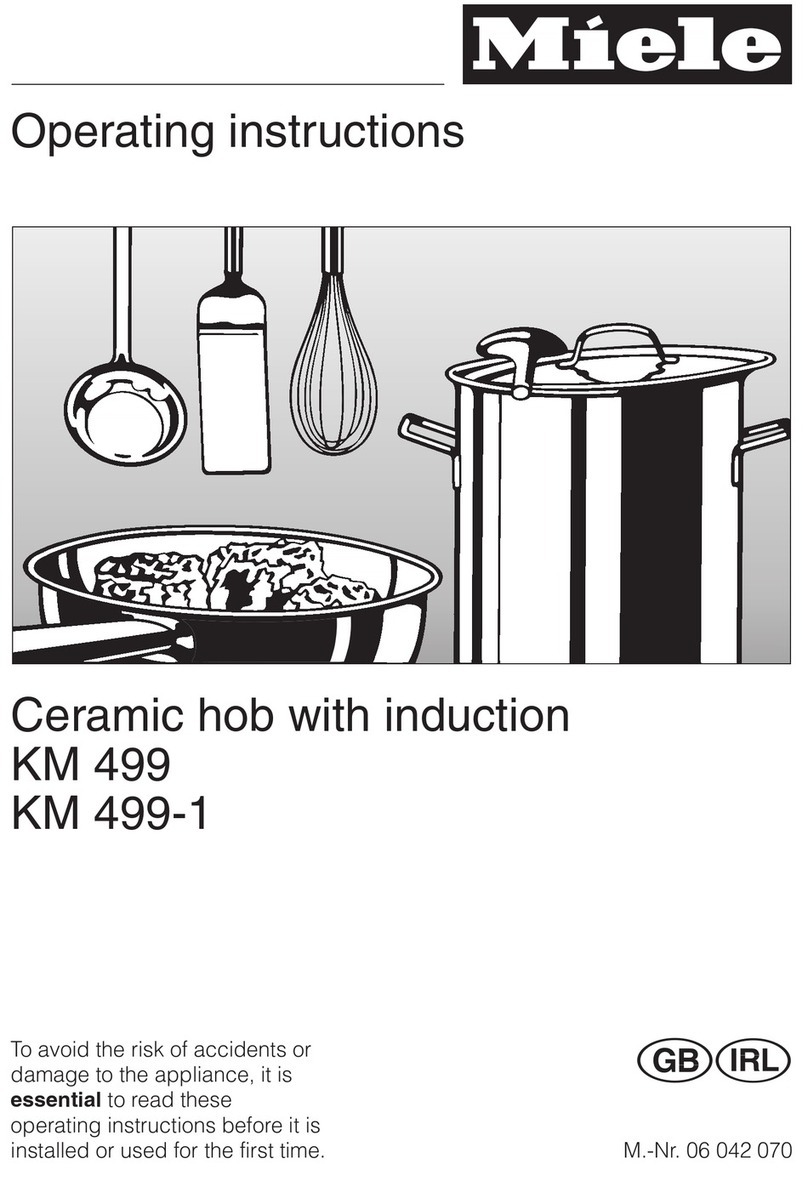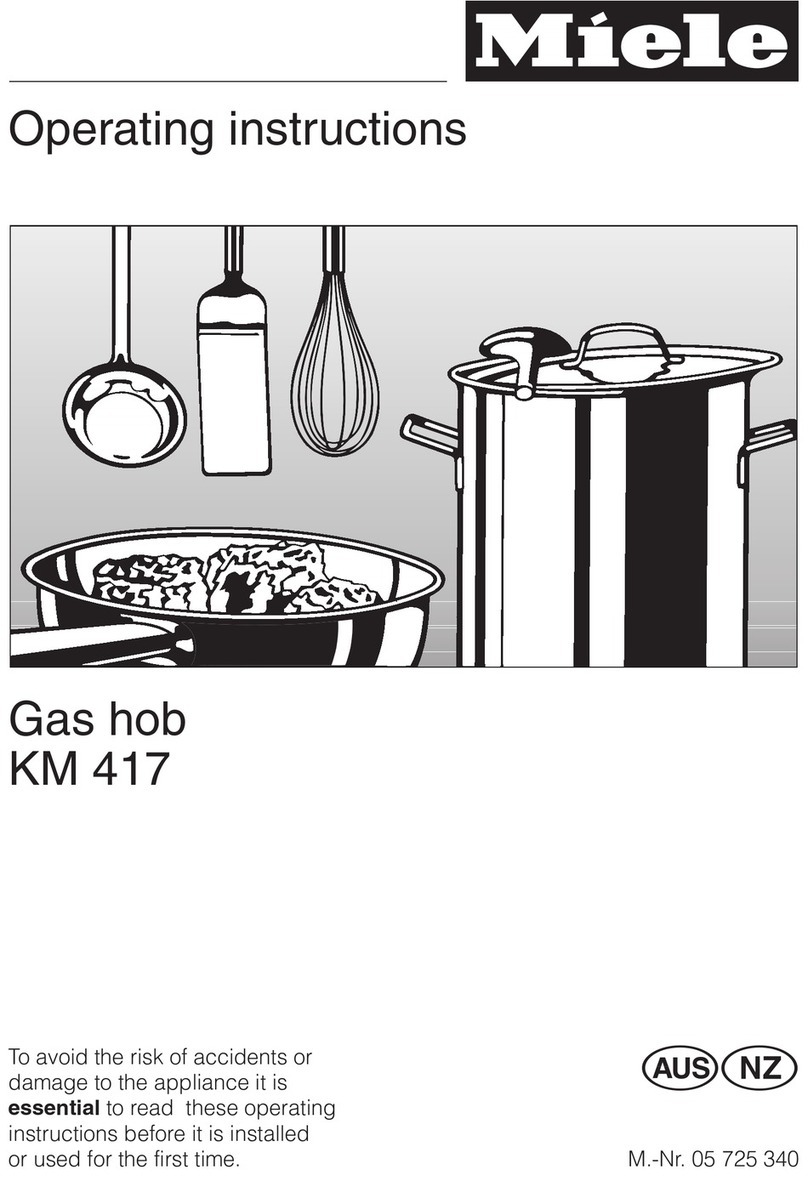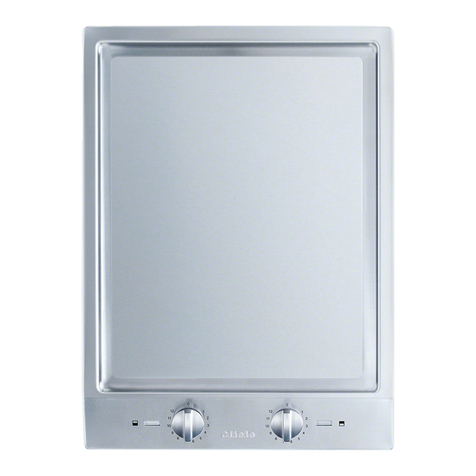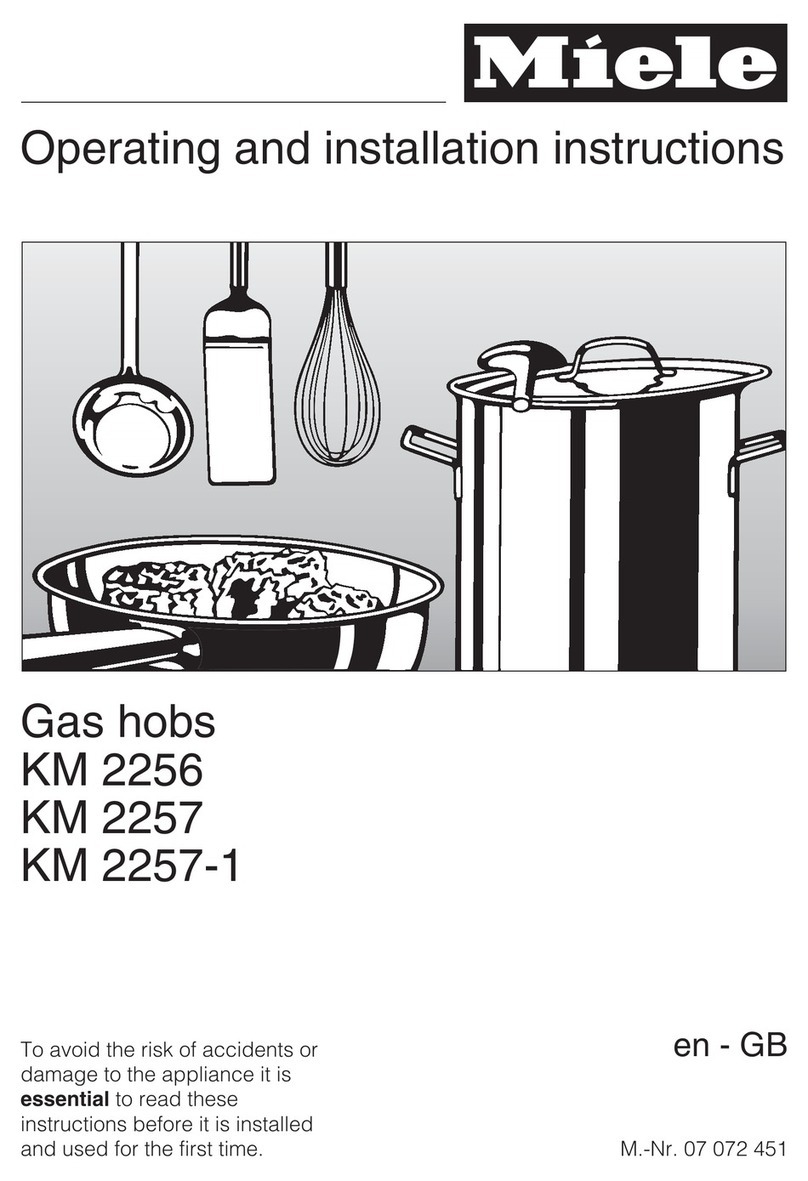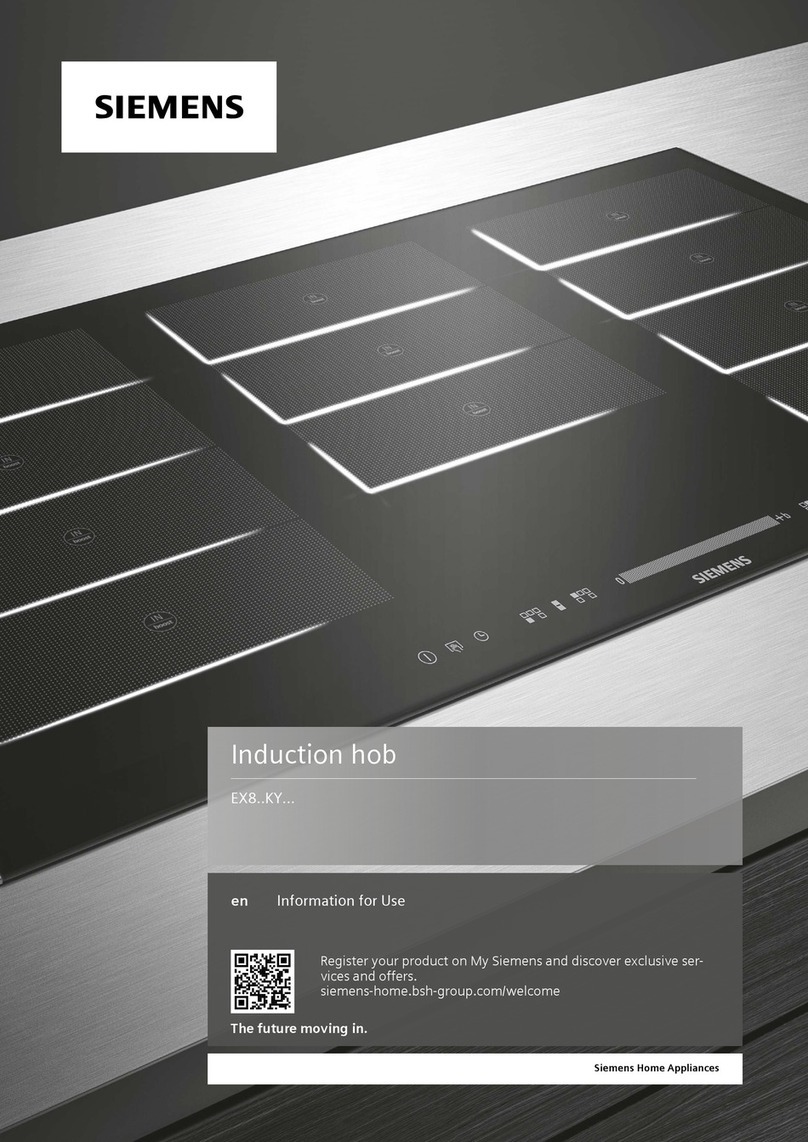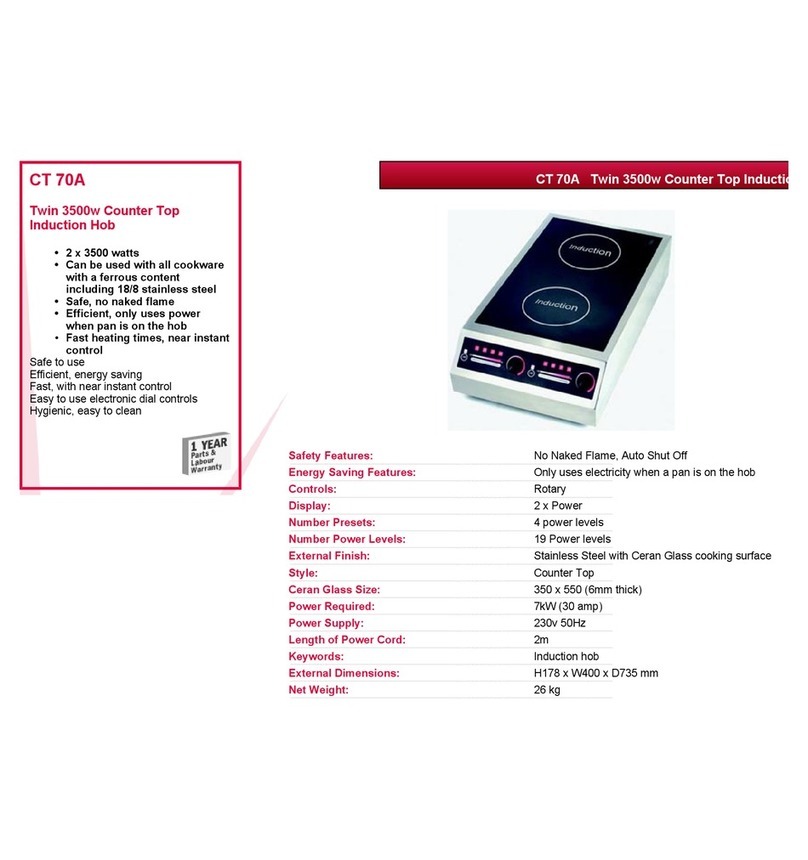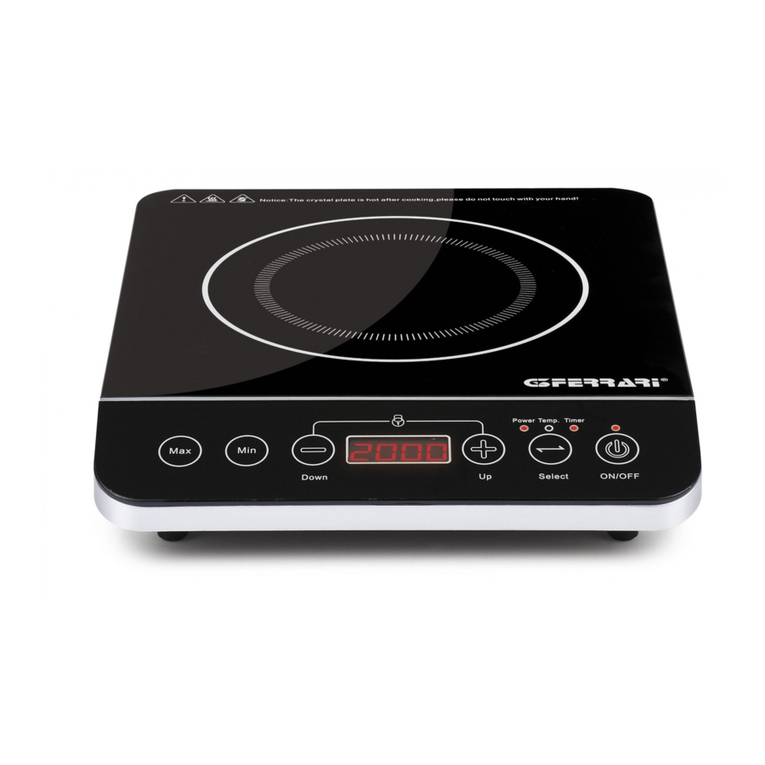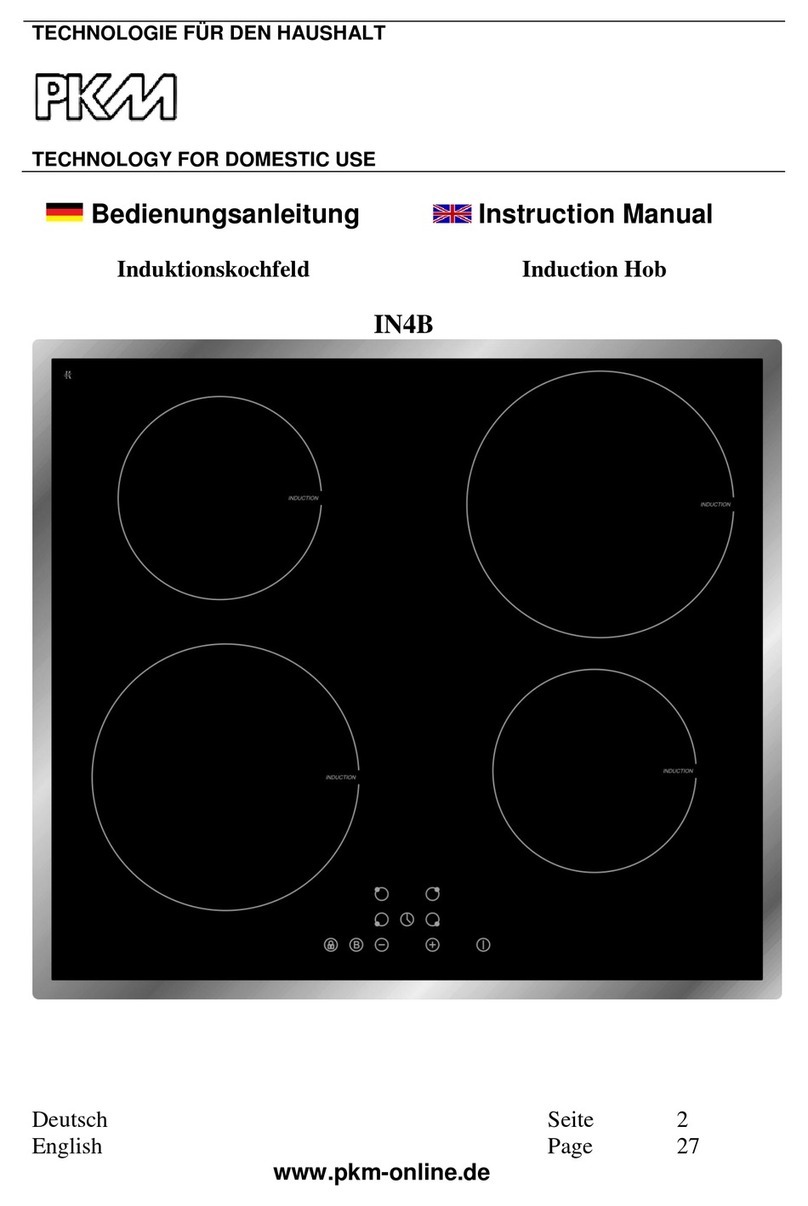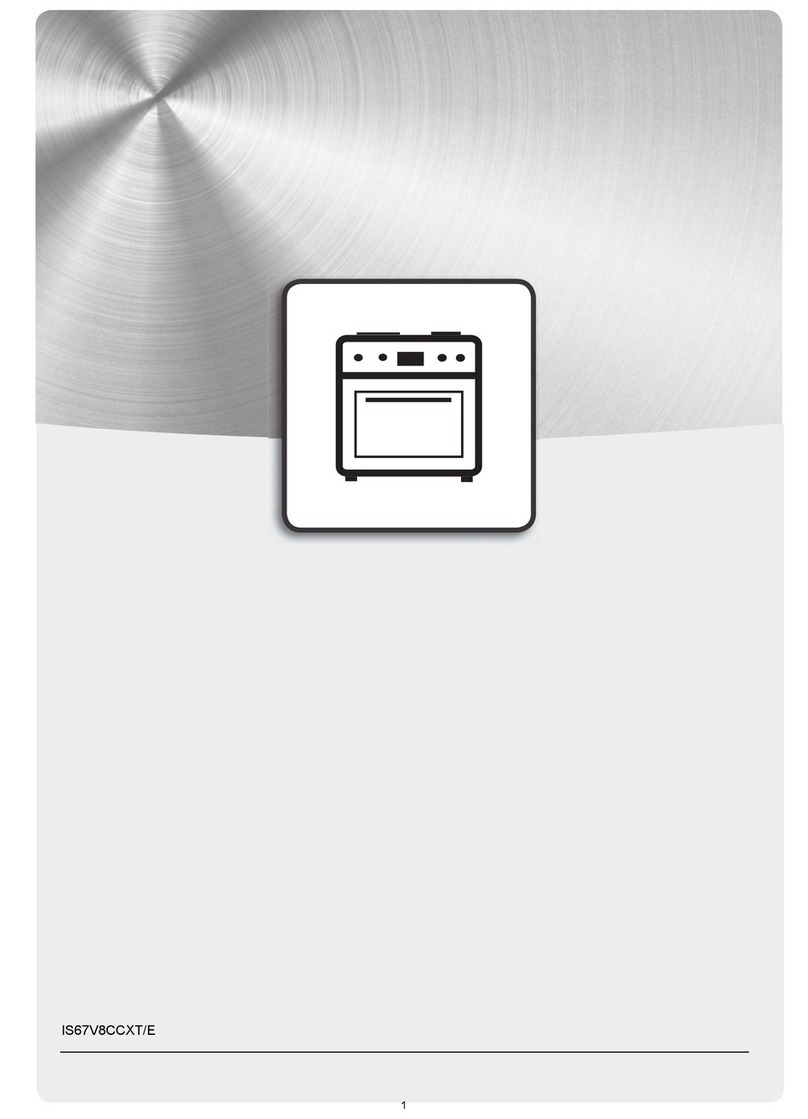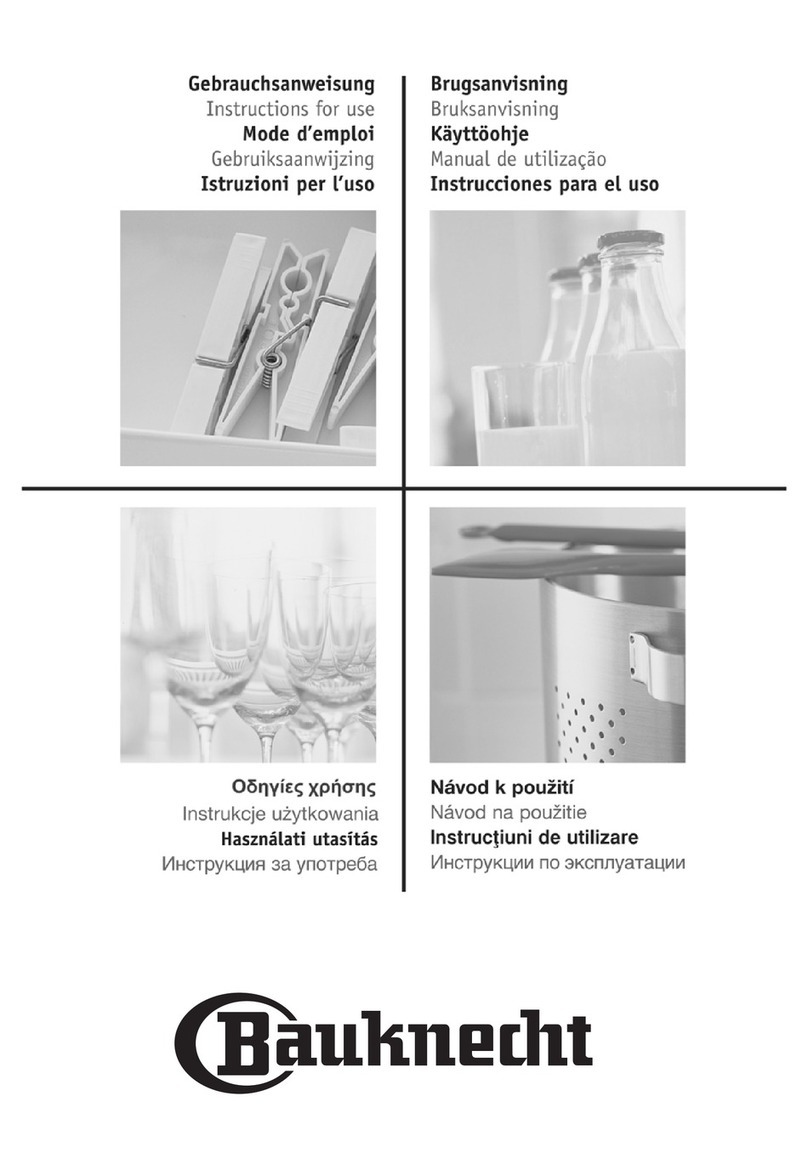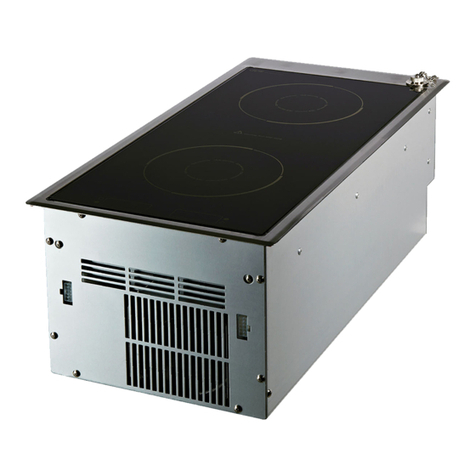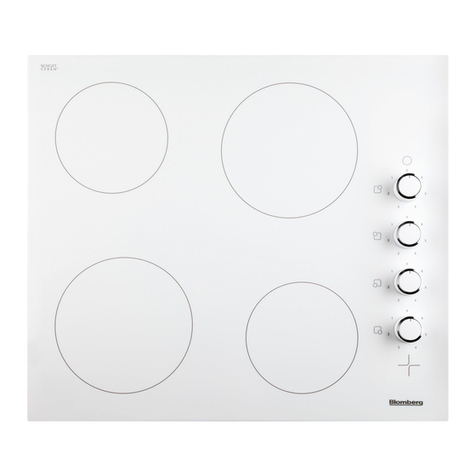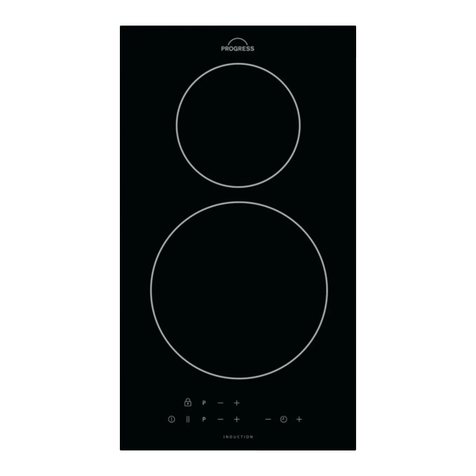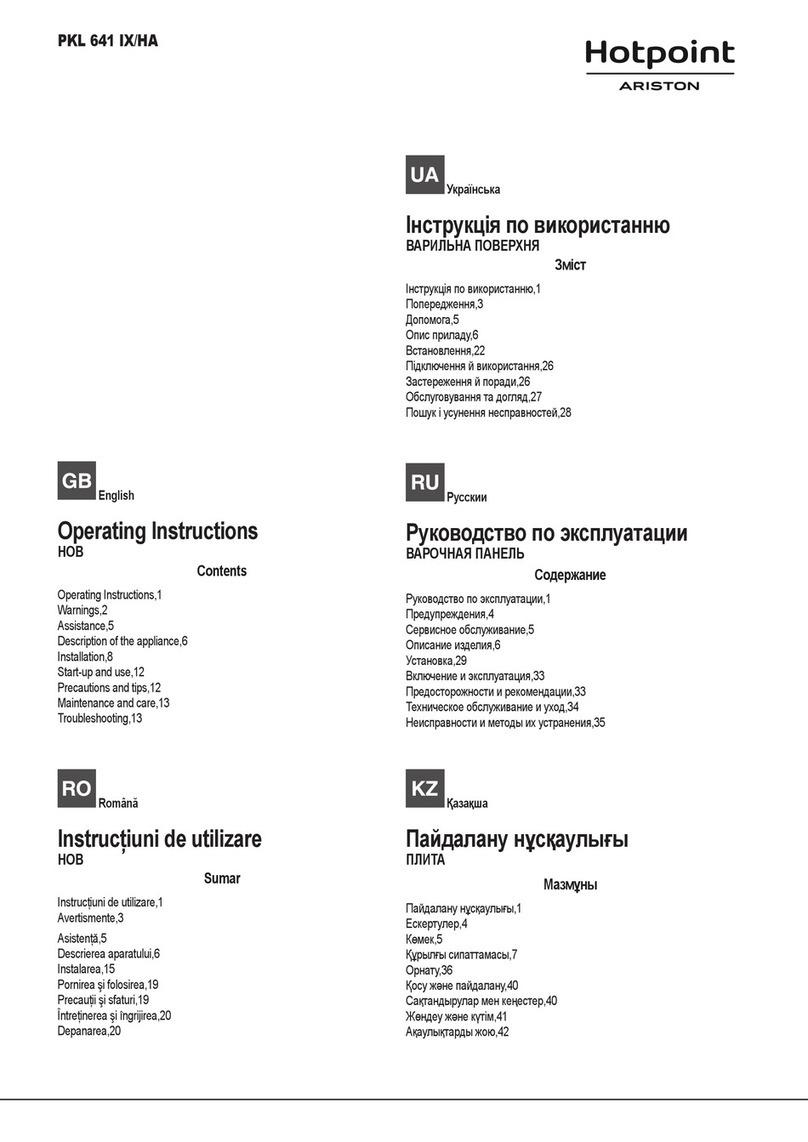Protecting the appliance from
damage
Do not drop anything on the
ceramic surface. Even a light
object could cause damage in certain
circumstances.
Do not use pots or pans on the
ceramic hob with bases with
pronounced edges or ridges. These
could scratch or scour the hob surface
permanently. Grains of salt and sand
can also scratch.
Do not allow either solid or liquid
sugar, or pieces of plastic or
aluminium foil to get onto the cooking
zones when they are hot. If this should
occur, switch off the appliance, and
carefully, scrape off all the sugar,
plastic or aluminium residues from the
hob whilst they are still hot, using a
shielded scraper blade. Take care not
to burn yourself. If residues are allowed
to cool before being removed, the
ceramic surface will be susceptible to
pitting or even cracking.
Clean the appliance once it has cooled
down.
To prevent the risk of spillages etc.
burning on, remove any soiling as
quickly as possible and ensure that pan
bases are clean, dry and free of
grease.
Do not use a steam cleaner to
clean this appliance. The steam
could reach electrical components and
cause a short circuit. Pressurised
steam could also cause permanent
damage to the surface and to other
components, for which the
manufacturer cannot accept liability.
Unless the pan manufacturer
states that you can do so, do not
use pans with very thin bases on this
hob, and never heat up empty pans as
they could get damaged. This could
also damage the appliance.
Never place hot pots or pans near
the residual heat display area. This
could damage the electronic unit
underneath.
In countries where there are areas
which may be subject to infestation
by cockroaches or other vermin, pay
particular attention to keeping the
appliance and its surroundings in a
clean condition at all times. Any
damage which may be caused by
cockroaches or other vermin will not be
covered by the appliance guarantee.
Warning and Safety instructions
9


